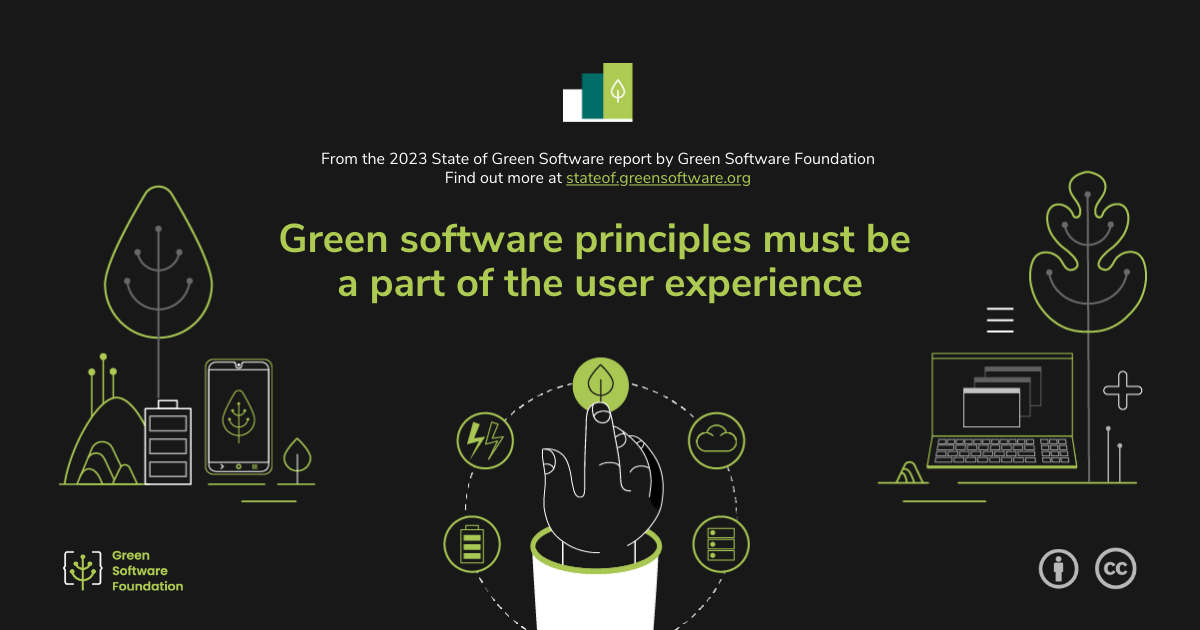Green software principles must be a part of the user experience
As we learned through our SOGS survey, adapting green software to specific use cases and client needs will be crucial to ensure that green software is successful in reducing emissions and mitigating climate change. One respondent argued that “end users need to be a part of the conversation to ensure green software developers continue to develop code that end users can and want to use.” And given the range of software practitioners who responded to our survey, including Cloud (57%), Web (52%), Desktop (22%), Mobile (18%), and Machine Learning (14%) Developers, green software principles should be part of the user experience across many domains.
Overall, many SOGS survey respondents asked for more transparency for end users and other decision-makers, focusing on ways of providing them with crucial information about energy consumption and feature choices. One person suggested adding carbon emissions labeling to existing software tools. Some respondents said they already apply sustainable design principles to their work. In contrast, others claimed that creating user-friendly and efficient software helped reduce the time users needed to complete actions, reducing their software’s carbon footprint. One person told us, “I would like to see carbon-aware checkpoints incorporated for users, e.g. ‘Have you checked database X for simulation results?’, ‘Have you efficiently set your input parameters?’ etc. as a way of helping users think through their decisions.” Another person lamented the general lack of transparency around energy usage: “As a software developer already interested in performance, my main barrier to developing more sustainable software is the lack of information on measuring energy usage (and therefore carbon emissions). The web is well-served with tools such as Google’s Lighthouse and Wholegrain Digital’s Website Carbon Calculator, but there seems to be a dearth of similar utilities for estimating the environmental impact of local processes.” Making easy-to-understand, user-friendly green software for a range of applications will be important for its commercial viability and overall impact.
Some respondents asked for ways to make green software principles more understandable to clients, who don’t always immediately see the value of green software design. Advocating for green software principles related to specific use cases will be another important step in successfully implementing green software. An Accenture report highlights how green UX can also be a boon to businesses: “For example, sustainably designing, developing, and hosting webpages might require more thoughtfulness at the planning stage. But these efficiencies will streamline the UX and drive down costs for businesses. An environmentally responsible website produces fewer carbon emissions, is faster, more intuitive, and potentially more profitable than less efficient webpages.”
While green software is still a developing field, some existing professional organizations provide communities for software practitioners who want to advocate for more sustainable user experience design practices. For instance, the Sustainable UX Network (SUX) was founded in 2021 by designers who wanted to create toolkits and best practices based on the UN’s Sustainable Development Goals. The nonprofit organization already has over 1500 members worldwide, suggesting that more resources for green software UX will be in demand in the future.
